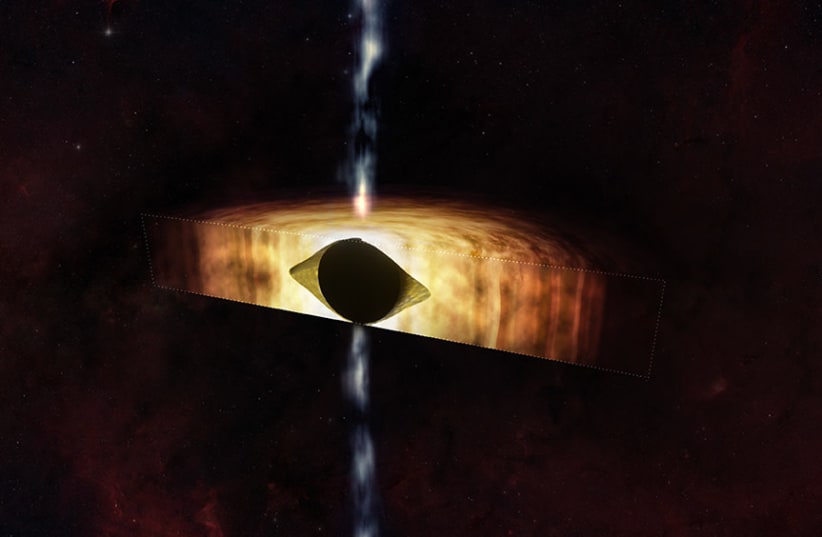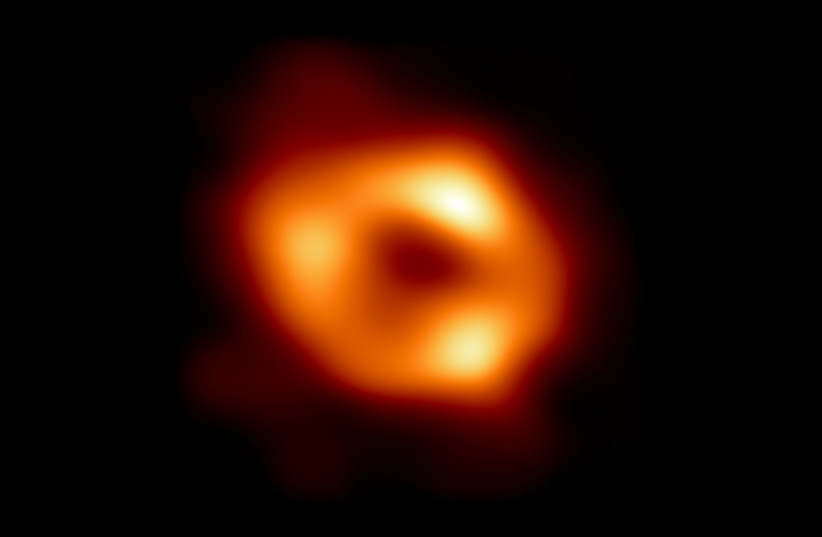Our galaxy's supermassive black hole makes spacetime look like a football - study
Getting in the Super Bowl spirit? Sagittarius A*, the supermassive black hole at the heart of our galaxy, spins so fast that it makes spacetime around it shaped like a football.
So how fast does the supermassive black hole at the heart of our galaxy spin?
This is a difficult question, since past attempts at determining its spin speed yielded wildly different results, ranging from not spinning at all to nearing the maximum speed possible.
Keep in mind that there is a set maximum of how fast Sagittarius A* could be spinning. This is because nothing can move faster than the speed of light.
In order to try and answer this question once and for all, the researchers behind the study tried a new method: Using X-ray and radio data to study how things flow towards and way from the black hole. They did this by studying the radio waves produced by the black hole spin and the X-ray emissions from the disk of gas surrounding it, while also factoring in the black holes mass as determined by numerous previous studies. That mass? Around 3.7-4.3 million solar masses, with one solar mass being roughly equivalent to the weight of the Sun and about 333,000 times the mass of Earth).
What they managed to find out is that its number of full revolutions per second, also known as its angular velocity, is 60% of the maximum possible value.
To put it mildly, that's very fast. But this goes far beyond simply a fast-spinning black hole. As noted by Daly in a statement shared by NASA, it has far reaching implications.
To understand why, it is important to understand two things: What black holes pull in when they spin, and what they end up producing.
When black holes spin, they pull in everything around it. This doesn't just include typical matter, but also spacetime, which is essentially the three dimensions of space as well as time. These things can end up being squashed down as a result.
Despite nothing being able to escape a black hole, the spin of a black hole is actually a source of energy, creating beams of materials like jets.
Quick Look: Telescopes Show the Milky Way's Black Hole is Ready for a Kick
How does this impact it turning into a football? It's all a matter of literal perspective.
While there is no "up" or "down" or "side" in space, the jets do typically go in two directions. Should one attempt to get what could be described as a bird's eye view of Sagittarius A* by looking along the barrel of one of these jets, spacetime appars to be circular. But if you look from the side, where one can see the two jets moving in opposite directions, spacetime would look like a football. The faster the black hole spins, the flatter the football would be.
But that's just the simple stuff. How are these implications far reaching? It all comes down to the jets.
In order to produce the jets, which are powered by the spin energy, there needs to be matter for the supermassive black hole to use. Likewise, the amount of matter determines the power of the jets. The more matter to fuel them, the stronger the jets.
Currently, there isn't actually much matter nearby. But should that change, such as if a star wanders too close and gets ripped apart by Sagittarius A*, they could get much stronger.
"Jets powered and collimated by a galaxy's spinning central black hole can profoundly affect the gas supply for an entire galaxy, which affects how quickly and even whether stars can form," co-author Megan Donahue from Michigan State University said in a statement. "The 'Fermi bubbles' seen in X-rays and gamma rays around our Milky Way's black hole show the black hole was probably active in the past. Measuring the spin of our black hole is an important test of this scenario."
"Although it's quiet right now, our work shows that in the future it will give an incredibly powerful kick to surrounding matter," noted co-author Anan Lu from McGill University. "That might happen in a thousand or a million years, or it could happen in our lifetimes."




No comments:
Post a Comment